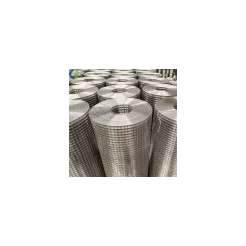Coal-based Columnar Activated Carbon with 0.9mm-10mm
Coal activated carbon, also known as activated charcoal, is a highly porous material that is produced by heating carbon-rich materials, such as coal, wood, coconut shells, or peat, in the absence of oxygen to create a high surface area material with a vast network of pores.
Product Description
Coal Activated Carbon
Coal activated carbon, also known as activated charcoal, is a highly porous material that is produced by heating carbon-rich materials, such as coal, wood, coconut shells, or peat, in the absence of oxygen to create a high surface area material with a vast network of pores.
The activation process creates millions of small pores between the carbon atoms, increasing the surface area of the material and creating a highly adsorbent substance that can be used for a variety of purposes, including water purification, air filtration, and gas adsorption.
Coal activated carbon is widely used in industries such as water treatment, pharmaceuticals, and food processing, as well as in the production of air and gas masks for personal protection. It is also used in a variety of environmental applications, including the removal of pollutants from soil and groundwater, and the capture of greenhouse gases from industrial emissions.
Application
-
Water Treatment: Coal activated carbon is used in the water treatment process to remove impurities such as chlorine, sediment, and organic contaminants. It is commonly used in water filters for household use as well as in large-scale industrial water treatment systems.
-
Air and Gas Purification: Coal activated carbon is used in air filters and gas masks to remove odors, volatile organic compounds (VOCs), and other harmful pollutants from the air. It is also used in industrial processes to remove impurities from gas streams.
-
Pharmaceuticals: Coal activated carbon is used in the pharmaceutical industry to purify drugs and remove impurities from raw materials.
-
Food Processing: Coal activated carbon is used in the food processing industry to remove impurities and contaminants from food and beverages.
-
Environmental Applications: Coal activated carbon is used in environmental applications such as soil and groundwater remediation to remove pollutants and contaminants from the environment. It is also used in the capture and removal of greenhouse gases from industrial emissions.
Coal based activated carbon manufacturing process
The manufacturing process for coal-based activated carbon generally involves the following steps:
-
Selection of Raw Material: Coal is selected as the raw material for activated carbon production. The coal used must have a high carbon content and low ash content, as well as a uniform size distribution.
-
Carbonization: The coal is first carbonized in the absence of air at temperatures between 600-900°C to create a carbon-rich material called char.
-
Activation: The char is then activated using one of two methods:
a. Chemical Activation: In this method, the char is treated with chemicals such as phosphoric acid, zinc chloride, or potassium hydroxide, which react with the carbon to create pores in the material.
b. Physical Activation: In this method, the char is exposed to high temperatures (800-1000°C) in the presence of a gas such as carbon dioxide, steam, or air. The heat causes the char to expand and create pores in the material.
-
Washing and Drying: The activated carbon is then washed to remove any impurities or residual chemicals from the activation process. The material is then dried to remove any remaining moisture.
-
Sizing and Packaging: The activated carbon is then sieved to obtain the desired particle size range, and then packaged for use.
Some general performance characteristics of coal-based activated carbon include:
-
High Adsorption Capacity: Coal-based activated carbon has a high adsorption capacity due to its large surface area and porosity.
-
Chemical Stability: Coal-based activated carbon is chemically stable and can withstand exposure to a wide range of chemicals without losing its adsorption capacity.
-
Cost-Effective: Coal-based activated carbon is often less expensive than other types of activated carbon due to the abundance and low cost of coal.
-
Wide Range of Particle Sizes: Coal-based activated carbon can be produced in a wide range of particle sizes, making it suitable for a variety of applications.
Ssential Details
Classification: Chemical Auxiliary Agent
CAS No.: 64365-11-3
Other Names: columnar activated carbon
MF: non
EINECS No.: 999-999-2
Purity: 99%
Place of Origin: HEBEI
Type: activated carbon
Usage: Water Treatment Chemicals
Brand Name: HJM
Model Number: HXT-C1
Product name: Coal-based columnar activated carbon
Shape: Columnar
Raw material: High-quality coal
Szie: 0.9mm,1.5mm,2mm,3mm,4mm,6mm,8mm,9mm,10mm
Sample: Free
Test: Factory test or third-party test
Delivery time: Within 7-14 days
Our advantage:
● Support free sample
● Short delivery time:within 7-14 days
● Support small trail order for all our friends to test quality
● Support test before loading.Also support the third-party test if you need
Specification
|
Item |
Coal-based columnar activated carbon |
|||||
|
Size (mm) |
0.9mm,1.5mm,2mm,3mm,4mm,6mm,8mm,9mm,10mm |
|||||
|
Iodine(mg/g) |
≥500 |
≥700 |
≥800 |
≥900 |
≥1000 |
≥1100 |
|
CTC(%) |
≥35 |
≥40 |
≥50 |
≥60 |
≥80 |
≥90 |
|
Specific Surface Area(m2/g) |
≥550 |
≥650 |
≥750 |
≥850 |
≥900 |
≥1000 |
|
Hardness (%) |
≥95 |
≥96 |
≥96 |
≥95 |
≥95 |
≥95 |
|
Bulk Density(mg/cm³) |
550-600 |
500-550 |
500-550 |
450-500 |
450-500 |
400-450 |
|
Moisture (%) |
≤8 |
≤8 |
≤8 |
≤8 |
≤8 |
≤8 |
|
Ash (%) |
≤12 |
≤12 |
≤12 |
≤12 |
≤12 |
≤12 |
Size detail:
We can supply :0.9mm,1.5mm,2mm,3mm,4mm,6mm,8mm,9mm,10mm and so on.











